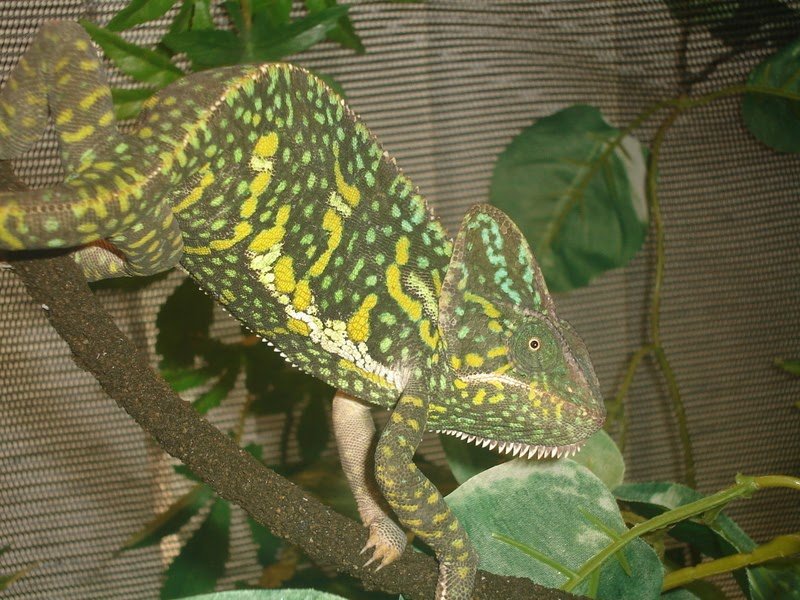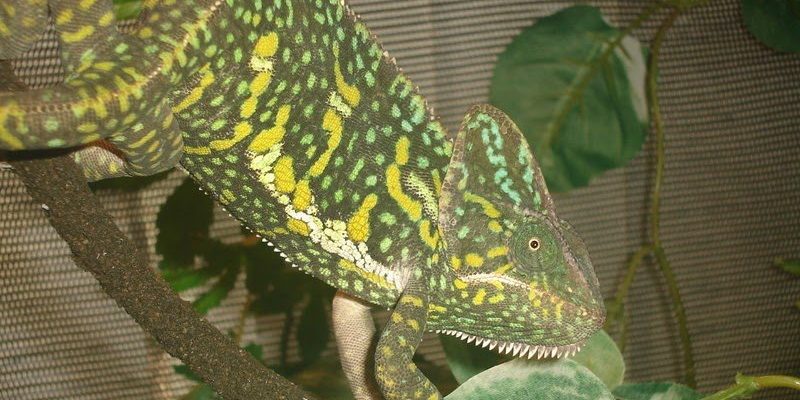
Imagine a vibrant little being, with a personality that’s distinctly its own, changing colors as it navigates its environment. That’s the veiled chameleon for you! They’re known for their striking appearance and engaging behavior, making them a favorite among reptile enthusiasts. But before you get excited about baby chameleons, let’s explore what breeding entails. From the required setup to the potential challenges, I’ll walk you through the essential elements you need to consider.
Understanding Veiled Chameleon Basics
Veiled chameleons are unique creatures native to the Arabian Peninsula. They thrive in warm, dry climates, which is essential to consider when setting up their habitat. These lizards are relatively small, generally measuring around 10 to 24 inches, depending on their age and sex. The males tend to be more vibrant, sporting bold greens, yellows, and even blues, while females are generally more subdued in color.
When preparing for breeding, you should first familiarize yourself with the basic needs of these reptiles. They require a controlled environment with specific humidity and temperature. Ideally, you want to maintain temperatures between 75°F to 85°F during the daytime, with a slight drop in temperature at night.
Setting Up a Breeding Habitat
Creating the right habitat is crucial for successful breeding. Imagine designing a mini rainforest where your chameleon could feel at home. Start with a spacious enclosure—a minimum of 4 feet high is recommended. This vertical space allows them to climb, which is a natural behavior for veiled chameleons.
Next, you’ll want to mimic their natural environment. Here’s how:
- Lighting: Use UVB lighting to help them synthesize vitamin D3, which is vital for calcium absorption.
- Humidity: Maintain humidity levels between 40% to 60%. You can achieve this with a misting system or by hand misting daily.
- Plants and Branches: Incorporate live plants like pothos or ficus to provide shade and a sense of security. Branches should be placed at various heights for climbing.
Once everything is in place, give your chameleons some time to settle into their new home before introducing them for breeding.
Choosing the Right Breeding Pair
Selecting the right pair of chameleons can be a game changer. First, always ensure that both the male and female are healthy and of breeding age—typically around 8 to 12 months. It’s important to look for signs of health, such as clear eyes, a good appetite, and active behavior.
When choosing your pair, consider the following:
- Genetics: Avoid breeding chameleons that are closely related, as this can lead to health issues in their offspring.
- Temperament: Males can be territorial and aggressive, especially during mating season. Observe their behavior to ensure compatibility.
- Size: It’s generally advisable to pair a male that’s larger than the female to prevent potential injuries during mating.
With the right pair in place, you’re on your way to witnessing a natural and beautiful process.
Understanding the Breeding Process
Now that you’ve got your habitat set up and your chameleons selected, let’s delve into the actual breeding process. During the breeding season, which is typically in spring, you’ll notice some changes in behavior. The male will become more vibrant and may even perform a series of displays to attract the female. You’ll see him bobbing his head and doing a little dance—pretty entertaining, right?
Once the female is receptive, mating can occur. This process can last anywhere from a few hours to a few days, and it may happen multiple times. After successful mating, the female will lay eggs about 4 to 6 weeks later. This is often where the excitement (and a bit of anxiety) kicks in!
Egg Laying and Incubation
After mating, female veiled chameleons will dig a hole in the substrate to lay their eggs. Here’s the thing—she can lay anywhere from 20 to 80 eggs at a time, depending on her age and health. It’s vital to provide her with a safe, soft substrate in which to bury the eggs. A mix of sand and coconut coir works well for this.
Once the eggs are laid, it’s time for incubation. Here’s how to handle it:
- Temperature: Maintain the incubation temperature between 75°F to 80°F.
- Humidity: Keep humidity levels around 60% to 80%. You can use a damp vermiculite substrate for the egg container.
- Time: Eggs usually take about 6 to 9 months to hatch, so patience is key!
Monitoring the eggs is essential. Check them regularly, but try to minimize disturbance to avoid stress.
Common Challenges in Breeding Veiled Chameleons
Breeding veiled chameleons isn’t without its challenges. You might encounter issues like egg infertility or health complications in either the parents or the offspring. Here are a few common problems and how to address them:
- Infertility: This can happen for various reasons, such as stress or health issues. Ensure a stress-free environment and monitor their diet closely.
- Egg Rot: If the substrate is too moist or if the eggs are not incubated properly, you may face egg rot. Regularly check the eggs and adjust humidity as needed.
- Health Issues: Young chameleons can be susceptible to health issues. Offer a varied diet and proper UVB exposure to strengthen their immunity.
By staying attentive and prepared, you can navigate these challenges and enjoy the rewarding experience of bringing new life into the world.
Breeding veiled chameleons can be a thrilling journey filled with ups and downs. From setting up the perfect habitat to overcoming challenges, each part of the process is an opportunity to learn and grow as a chameleon keeper. Remember, patience and dedication are your best friends in this adventure.
As you dive into the fascinating world of chameleon breeding, take the time to enjoy the little moments. Each vibrant hue and unique personality adds to the story of your chameleons. With the right knowledge and preparation, you’re not just breeding chameleons—you’re nurturing a bond that can last for years. Happy breeding!

